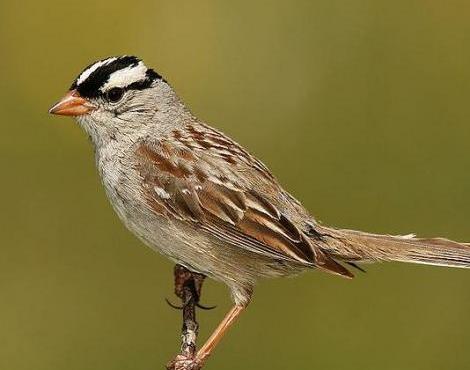Sparrow Facts
| Kingdom: | Animalia |
| Phylum: | Chordata |
| Class: | Aves |
| Order: | Passeriformes |
| Family: | Passeridae |
| Scientific Name: | Passeridae |
| Type: | Bird |
| Diet: | Omnivore |
| Size (H): | 11.4cm - 18cm (4.5in - 7in) |
| Wing Span: | 12cm - 20cm (4.8in - 7.9in) |
| Weight: | 13.4g - 42g (0.5oz - 1.5oz) |
| Top Speed: | 40km/h (25mph) |
| Life Span: | 4 - 7 years |
| Lifestyle: | Flock |
| Conservation Status: | Least Concern |
| Colour: | White, Black, Grey, Brown, Tan, Blue, Yellow |
| Skin Type: | Feathers |
| Habitat: | Countryside and woodland |
| Average Clutch Size: | 4 |
| Main Prey: | Insects, Seeds, Berries |
| Predators: | Cats, Snakes, Hawks |
| Distinctive Features: | Small body size and rounded head |
Sparrows are a group of small sized birds that are found in woodlands and across farmlands all around the world. Today, there are thought to be 140 different species of sparrow spread throughout almost every continent.
Historically, the true sparrows were found throughout Europe and in parts of Asia and Northern Africa. However, human travellers that settled on other continents including Australia and America introduced sparrows to these areas, where they are now considered to be part of the native wildlife.
Sparrows are generally small sized birds that can be easily identified by their smoothly rounded heads. Sparrows range in size from the Chestnut sparrow found in Africa, which is just over 10cm in height, to the Parrot-billed sparrow (also found in Africa) that grows to more than 18cm tall.
Sparrows are omnivorous birds that mainly eat seeds and substitute their diet with berries, fruits and small insects. Some sparrow species have also adapted to life in the city where like gulls and pigeons, these plump little birds are known to eat almost anything that they can find.
Today, there is little concern over the sparrow populations although it is possible that populations will be affected by the ever changing weather conditions as a result of global warming and therefore, drastic climate change.











0 comments:
Post a Comment